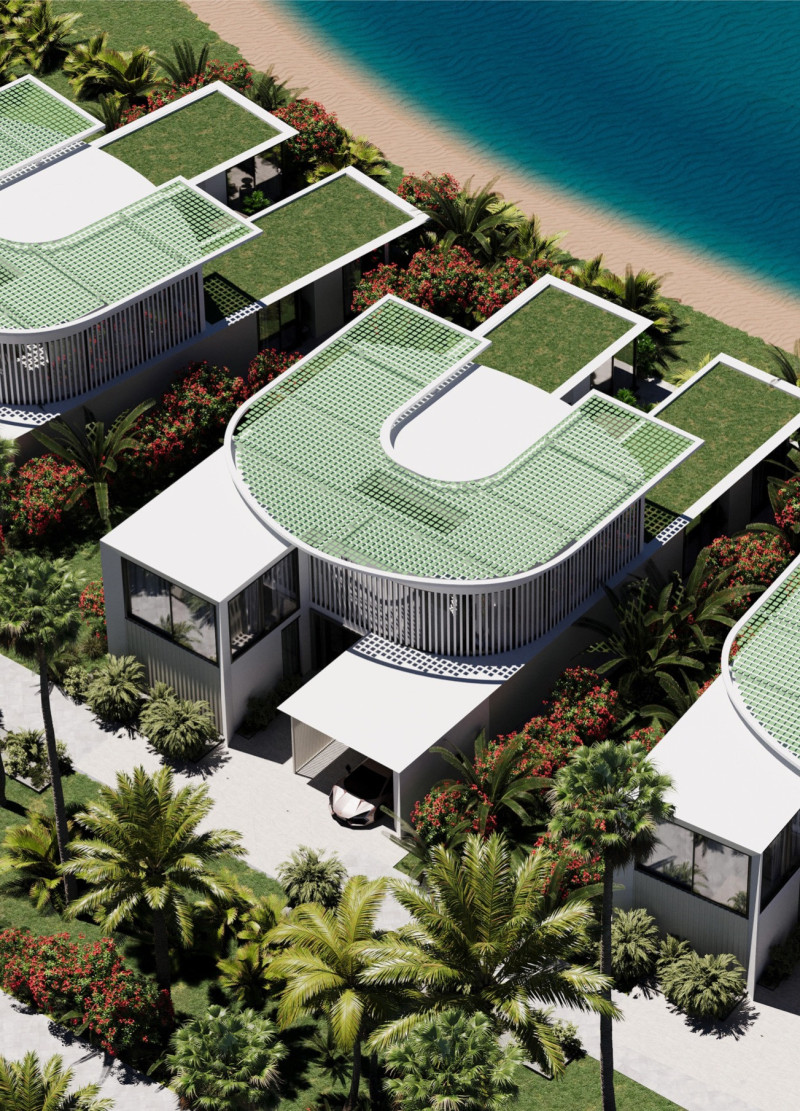5 key facts about this project
At the heart of the project lies a well-considered spatial organization. The overall layout intelligently balances public and private spaces, promoting social interaction while ensuring tranquility in more intimate areas. Open-plan configurations allow for flexible uses and adaptability, making the architecture responsive to varying occupant needs. Key areas within the project include versatile communal spaces that foster gatherings while maintaining areas for quiet reflection, illustrating the designers' understanding of nuanced human activity.
Materials play a crucial role in the project's character and sustainability. A judicious selection of materials such as reinforced concrete, natural stone, glass, and sustainably sourced timber reflects a conscious effort to create a harmonious relationship between the structure and its environment. The use of glass enhances transparency, maximizing natural light while providing visually engaging views of the surrounding landscape. This approach not only elevates the interior comfort but also serves to minimize reliance on artificial lighting, thus embodying principles of energy efficiency and environmental stewardship.
In terms of architectural detail, the project exhibits meticulous craftsmanship that highlights the interplay between form and function. Texture and material contrasts accentuate specific features, leading to a cohesive yet varied visual narrative throughout the spaces. Outdoor elements are equally considered, with landscaped gardens and terraces designed to merge seamlessly with the built environment, creating a sense of continuity between indoors and outdoors. These green spaces not only provide recreational opportunities but also contribute to the microclimate, enhancing the overall environmental performance of the architecture.
One of the unique design approaches is the incorporation of passive design strategies, which optimize natural ventilation and thermal comfort. Large overhangs and carefully oriented windows allow for efficient airflow while mitigating heat gain, significantly reducing the building's energy consumption. This alignment with passive solar principles demonstrates a forward-thinking approach that respects ecological constraints, allowing the project to serve as a model for future developments in sustainable architecture.
The architectural language employed is understated yet sophisticated, utilizing clean lines and proportionate forms to create a sense of calm and balance. This design ethos extends to the choice of colors and finishes, which are kept neutral to ensure the structure resonates with its natural surroundings while simultaneously making a gentle impact within the urban context.
With its careful consideration of user experience, environmental responsibilities, and contextual integration, this architectural project stands as a testament to the potential of modern design. The thoughtful interplay of space, form, and materials culminates in a structure that invites exploration and interaction while remaining a considerate participant in the landscape. To further appreciate the comprehensive vision and details of this project, readers are encouraged to explore the project presentation, which includes *architectural plans, architectural sections, architectural designs,* and *architectural ideas* for additional insights into this compelling endeavor.


 Nataliia Syrota,
Nataliia Syrota, 























